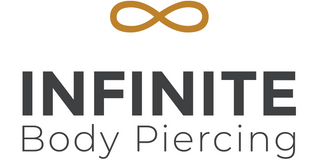Penis Piercing FAQs
Do genital piercings hurt?
They do, but not any more than other piercings. The idea may be a little scarier, but they’re just as easy to sit through as anything else—sometimes easier, as most genital tissue is quite soft and offers little resistance to a sharp needle.
Which piercings hurt less?
One of the worst ways to pick a genital piercing is by trying to figure out which one hurts less; get the piercing you want. Granted an ampallang or apadravya piercing may not be the one to get if this is your first genital piercing, but you shouldn’t avoid the piercing you want because you think you can't sit through it. Others have, and you can too.
Why is the jewelry so thick?
Genital piercings—especially more “functional” piercings on the shaft—are subject to a lot of pressure during sexual activity. This added abuse means that if you wear jewelry which is too thin your piercing may become sore, irritated, or even tear through the piercing channel. For this reason, we start most penis piercings with 10 gauge jewelry, through for some, such as the Prince Albert, we encourage even a thicker start.
Do I have to shave before my piercing?
Piercings through the glans or skin on the shaft (Prince Albert, frenum, dydoes, ampallang, and apadravya) aren't affected by shaving, but scrotum or guiche piercings can be a little easier to heal without hair. Shaving also makes marking these piercings a little easier for your piercer. Just make sure to use care if you shave during healing, and be sure to work around your piercing.
What should I do to prepare myself?
As with any procedure, make sure to eat a good meal within four hours of getting pierced and make sure there aren't any drugs or alcohol in your system. Make sure you've slept enough the night before and aren't under a lot of stress, dehydrated, or hungover. Give yourself a good bath or shower. This isn't necessarily for your piercer—though they will thank you—but to help you feel more comfortable being half-dressed in one of our piercing rooms.
Do I have to be erect during the procedure?
No. Even with your penis flaccid, your piercer should be able to figure out what size jewelry you will need to accommodate for erections and swelling during the initial healing.
Which piercing will give me the most sensation?
This depends on the type of stimulation you’re looking for. For urethral stimulation, the Prince Albert can’t be beat. The frenum gives extra feeling to the sensitive underside of the shaft, the movement and weight of a ring in a guiche piercing will make for external prostate stimulation (and who doesn’t like that!), while the ampallang and apadravya provide a different feeling altogether.
Which piercing will my partner like most?
That depends on a lot of things. Which is better for oral sex? The PA and frenum can be fun, while the ampallang and apadravya can sometimes get in the way. For vaginal sex? The PA and apadravya are good for G-spot stimulation, while many people swear by the pubic for clitoral stimulation during face-to-face penetration. A large, centrally-placed scrotum ring can provide clitoral stimulation for “doggy-style” sex, while some people find the ampallang uncomfortable during vaginal penetration. The PA, apadravya, and reverse PA can provide prostate stimulation during anal sex, depending on the position during sex. Other than that, you’ll need to experiment. We can't give you all the answers!
Is there a chance I could lose sensation/function?
No. Nerves in the penis are plentiful (obviously) and traditional penis piercings do not intersect areas that can affect sensation or function.
Can this affect my ability to have children?
No. These piercings do not penetrate any part of the genitals involved in sperm production. Even scrotum piercings only penetrate superficial layers of skin, not the testicles.
Do I have to abstain from sex during the entire healing period?
No, but you should use common sense and pay attention to your body—and don’t push it. Sometimes this means several days, but more often it means a week or more. If you do have sex before the end of the healing period (see Healing Times for more information), make sure to use a condom and make sure your sex is fluid-safe—even for oral sex. This is true even if you are monogamous with your partner. Everyone has different bacteria natural to their body, so you can pick up an infection from your partner during healing, even if you normally have unprotected sex.
Will getting a Prince Albert, ampallang, or apadravya mean I’ll have to sit down to pee?
Maybe. With initial jewelry the effect is usually little more than an extra dribble—meaning you simply need to stand over the toilet instead of back from it. Stretching to larger jewelry can definitely redirect the stream a bit more. The bigger the jewelry, the more you'll have to practice.
Can I go swimming?
It is best to avoid swimming for the full duration of the healing period. The risk to your piercing depends on where you’re swimming: saltwater and chlorine may be okay for your piercing, however, other bacteria in the water may be problematic; the water on a beach in the tropics is not the same at the water at the Jersey Shore; and you can never be sure how balanced the chemical levels are in anyone else’s pool—or what else may be in the water. Definitely avoid hot tubs, quarries, or lakes, as here the water quality is even more questionable. At a minimum, plan to avoid swimming for at least three months, and if you do swim during the healing process, the most important thing to do is to make sure that you clean your piercing afterward.
















